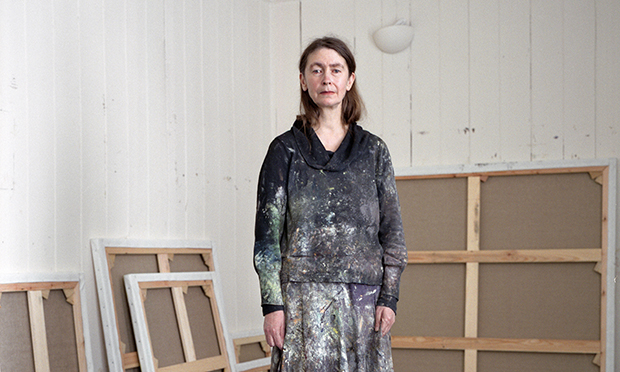
Celia Paul Explores Identity and Place Through Her Art

Celia Paul: A Life in Paint and Prose
British artist Celia Paul has long blurred the boundaries between art and autobiography. A painter of remarkable quietude and emotional intensity, her work has gradually gathered attention not simply for its technique but for its fiercely personal perspectives. Her newest monograph, Celia Paul: Works 1975–2025, published by MACK, offers a career-spanning collection that reaffirms her position as one of Britain’s most intimate and introspective contemporary artists. Spanning five decades of painting, the book incorporates essays by Paul herself and other writers, resulting in a multifaceted portrait of an artist whose life and art are intimately entwined.
Autobiography As Artistic Practice
Central to Paul’s artistic philosophy is her declaration that she is “an autobiographer” rather than a traditional portraitist. Unlike portraiture which seeks to capture another person, Paul consistently looks inward and returns to a few recurring subjects: the women in her family, her own likeness, and the landscapes of her memory — particularly the British Museum and the sea. Her work is deeply personal and meditative, evoking themes of grief, loss, yearning, and solitude in a subdued palette and textured brushwork.
This autobiographical nature is highlighted in her continued efforts to depict herself through self-portraits over time. Yet Paul has stated that she did not feel she painted her “true self” until after the passing of her mother in 2015. That event marked a significant emotional and artistic turning point. Her subsequent paintings — deeply immersed in mourning — revolve around her sisters and herself, consumed by shared grief.
Themes of Grief and Home
The loss of her mother drastically shaped two of her literary works — Self-Portrait (2019) and Letters to Gwen John (2022). These writings delve into the dimensions of grief that painting alone could not encapsulate. In particular, Letters to Gwen John emerged as both a tribute and a literary rebuttal to misinterpretations of her story, most notably an article by novelist Rachel Cusk that attempted to frame Paul through another artist’s lens.
Throughout her monograph and art, Paul’s complex relationship with the notion of ‘home’ recurs with visceral power. Born in India to British missionaries, Paul experienced a nomadic and austere childhood before settling into a flat gifted to her by Lucian Freud, her former mentor and lover. That flat — overlooking the British Museum in London — became her sanctuary, and today symbolizes both security and displacement. She writes poignantly that “home” remains a “yearning,” suggesting that her repeated acts of self-portraiture are an effort, however futile, to find permanence in self-expression.
Gendered Spaces and Artistic Belonging
Paul’s reflections on gender bring a layered complexity to her identity as an artist. Although she predominantly paints women, Paul’s longing “to belong among” the powerful male figures of British painting underscores a history of exclusion and quiet protest. This tension is laid bare in her 2023 painting Colony of Ghosts, in which she depicts Freud, Francis Bacon, Frank Auerbach, and Michael Andrews — not with reverence, but as spectral companions she continues to confront.
In a particularly telling curatorial gesture at Victoria Miro Gallery in London, Colony of Ghosts is hung across from a self-portrait of Paul reclining sternly on a chaise lounge, covered in paint. Here, she challenges these male ghosts directly, asserting her right to be seen and remembered — not as a muse or follower but as an equal.
The Painted Word
While Paul’s visual work relies on subtlety and restraint, her writing is charged and often more revealing than her paintings. The duality of her voice — one that is expressed both through brush strokes and written word — has strengthened over time. Her monograph is not simply a retrospective but a reckoning with the layered, often contradictory nature of her identity. Her prose reflects themes of austere determination as well as quiet defiance, crafting an image of an artist caught between solitude and recognition, vulnerability and strength.
By entwining essays, photographs, archival works, and personal reflections, Celia Paul: Works 1975–2025 repositions Paul not just as an artist of quiet observation, but as a resolute narrator of her own life. She continues to examine — with gentle obsession — how one’s physical presence interacts with memory, space, grief, and longing.
Conclusion
Celia Paul’s body of work is a testament to the significance of interiority in a world often captivated by spectacle. Her devotion to a personal, introspective methodology — despite prevailing trends or expectations — speaks volumes. Whether through the somber hues of “My Sisters in Mourning” or the haunting defiance of “Painter Seated in her Studio,” Paul peels away layers of façade to expose vulnerable truths.
At 65, Paul has spent a lifetime trying to communicate her version of herself — one that is